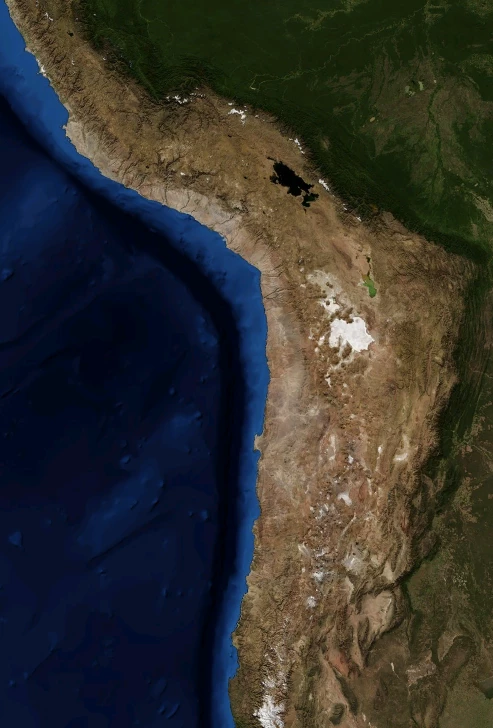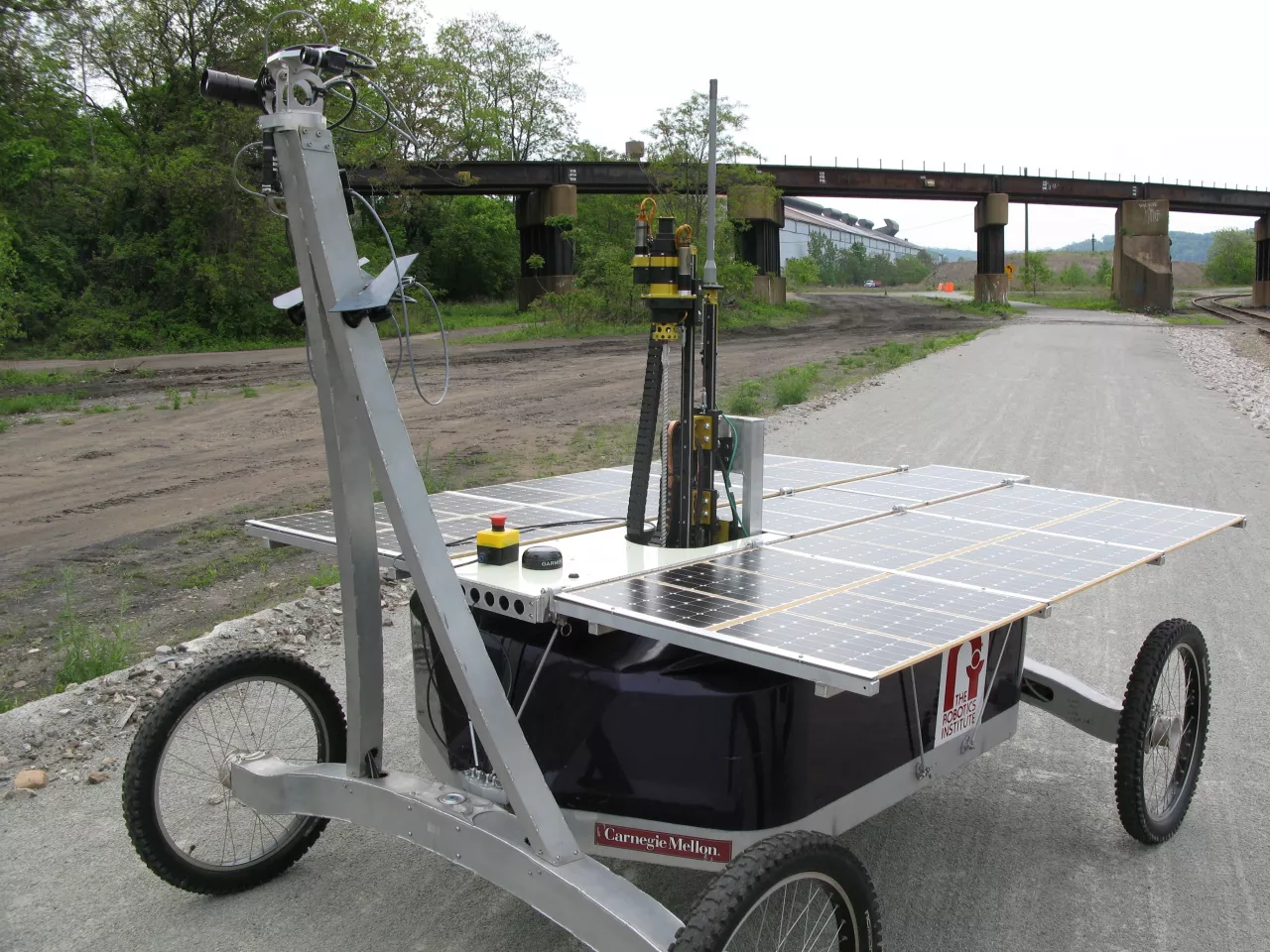Scientists looking for life on Mars are studying the driest desert on Earth. This month, Carnegie Mellon University's Zoë robot will traverse Chile’s near-uninhabitable Atacama Desert as part of an astrobiology experiment aimed at testing technologies and techniques for NASA’s next rover to search for life on Mars at the end of the decade.
Areas of the Atacama are among the most lifeless places on Earth where not even bacteria can survive. Nitrates that fall from the sky that bacteria would normally gobble up remain uneaten and rainfall is measured in millimeters per decade. It doesn't help that the Atacama is surprisingly cool with a Mediterranean climate because not only isn't there enough water to sustain life, but the cooler temperatures means there’s less energy available for growth and reproduction. In many respects, this ten million year old desert is a very good analog for studying how to search for life on Mars.
“We are measuring the subsurface habitats in which life survives, determining what factors are important, and learning about one of the Earth’s harshest climates,” says Planetary Geologist Nathalie Cabrol, senior research scientist at the Carl Sagan Center of the SETI Institute and science lead for the Life in the Atacama project.

Part of the program for developing the next NASA Mars rover that is set to launch in 2020, Zoë looks like a box on wheels, but appearances can be deceiving. It is, in fact, an autonomous, solar-powered robot that was the first to map microbial life in the Atacama in 2005.
Two meters (6.5 ft) long and weighing only 180 kg (397 lb), the four-wheeled robot is covered by a three sq m (32 sq ft) solar panel made of high-efficiency gallium arsenide solar cells that keep its batteries charged. It’s equipped with panoramic imagers, microscopic imagers, spectrometers, is capable of complex obstacle negotiation, over-the-horizon navigation, and can allocate resources based upon its instructions and mission priorities provided by the control center in Pittsburgh.
Since it's meant to test technologies for exploring Mars, Zoë doesn’t have a compass or GPS receiver for navigation, since both would be useless on the Red Planet. Instead it relies on orbital terrain models and stereo vision to avoid obstacles. According to the team, this has worked so well that Zoë can operate on its own and can travel up to one kilometer (0.6 miles) during a command cycle.

Part of Zoë’s mission is to study the geology of the Atacama and look for signs of life to build a biogeological map of the desert. On its underside it has a fluorescent imager to hunt for life and a drag plow to scrap holes in the soil. When it restarts operations in Chile this month as part of a NASA astrobiology mission led by Carnegie Mellon University and the SETI Institute, it will be equipped with a one-meter (3.2 ft) drill made by Honeybee Robotics to search for subsurface life.
“Direct evidence of life, if it exists, is more likely underground, beyond the current reach of rovers,” says David Wettergreen, research professor in Carnegie Mellon’s Robotics Institute and the principal investigator for the Life in the Atacama Project. “Chances improve with greater depth but we are first developing one-meter capability and integrating with a mobile robot.”
Zoë is currently undergoing engineering tests in Chile and will begin two weeks of desert exploration on June 17 that will see it will cover 30 to 40 km (18 to 25 miles) in the driest, most lifeless areas. During this time, it will carry out up to two drilling operations per day with soil samples taken on board the robot where a series of instruments will analyze them. In keeping with its brief to test technology for the next Mars rover, this will include the Mars Microbeam Raman Spectrometer, which analyzes mineral and elemental composition and is a candidate for the 2020 mission science package.

This schedule reflects the Carnegie Mellon team’s confidence in the robot and a switch from engineering development to autonomous exploration. The plan is for Zoë to carry out programmed instructions during the day, hibernate at night, and automatically resume work at sunrise.
“Now, we think of the robot as a tool to collect specific data from specific locations, rather than as a machine that drives around,” says Cabrol.
In 2012, a team was sent to the Atacama to try various techniques by hand, such as neutron detection to measure hydrogen as a way to determine the presence of water, subsurface drilling, and spectroanalysis. This was to provide a benchmark with which to compare the robot’s findings this year and in 2014.
Tests like these have already had an impact on Mars exploration. According to the team, tests of a neutron detection instrument, called the Dynamic Albedo of Neutrons, showed a fault due to the decay of the radioactive tritium in its neutron generator, which led to NASA rescheduling its use aboard the Curiosity Mars rover. The decay meant that the instrument wouldn't survive long into the two-year surface mission, so it had to be used earlier than planned.
The public can follow the progress of Zoë at the Carnegie Mellon website.
The video below outlines Zoë’s capabilities.
Source: Carnegie Mellon











